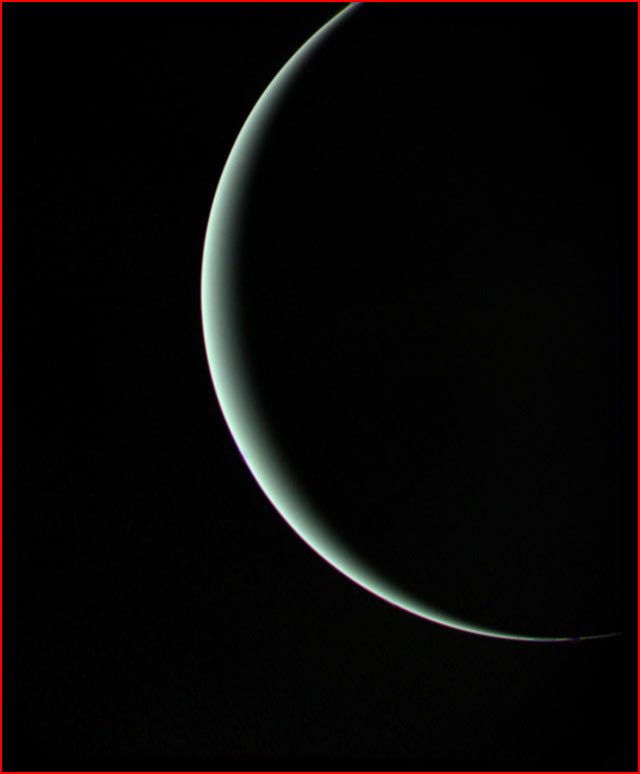|
|
||
 Credit: NASA/Voyager 2 |
||
|
pic of the day Links:
Society for
|
Aug 19, 2004 Any theory that tries to explain the origin of the solar system will run afoul of the question "What happened to Uranus and its family of moons?" Uranus has more than a dozen orderly moons. They revolve in almost perfect circles exactly in the plane of Uranus' equator. This would be an ideal example of how a gravitational system is thought to evolve from a collapsing nebula, except for one detail: the whole planet, fifteen times the mass of Earth, has been tipped over on its side, so that its poles are near the plane of its orbit and its equator rotates in a direction that should be north and south. And most of its moons also circle "north and south". How could that happen? If the moons formed before Uranus tilted, they should still be orbiting in the plane of Uranus' original equator. But if the moons were captured from the solar disk after Uranus was tilted, they shouldn't be circling its tilted equator. In either case, they should be circling its poles. In fact, recently two tiny "captured" moons of Uranus were discovered, and they do circle the poles. It gets worse. The path of Uranus' moons corresponds to Uranus' equator better than the planets themselves correspond to the Sun's equator. What could have given the odd-ball Uranus such an orderly family when the Sun's own equator is tilted 7° to its family of planets? Uranus' tilt is only the most blatant version of a larger problem. Saturn tilts, too, a little more than the Earth. And, as with Uranus, all but the tiny outer "captured" moons of Saturn circle its tilted equator, as do the rings of Saturn. Jupiter's main family of moons circle in the plane of Jupiter's orbit. But Jupiter's poles aren't appreciably tilted, so its moons orbit Jupiter's equator as well. Which "rule" is dominant? Do the moons of Jupiter follow the rules of the nebular theory, or are their orbits coincidental with Jupiter's untilted poles? Neptune's moons aren't orderly. Nereid has an orbit so elongated that it nearly escapes Neptune's influence. Triton, the largest moon, is the only major moon that revolves backwards. Plus, it's orbit is decaying. It can look forward to tidal disruption or crashing into Neptune. It is impossible for a retrograde moon to have formed around a planet by the nebular theory -- it must have been formed elsewhere and then captured or its orbit may have been reversed by a near-collision event. None of these systems are well-explained by the Nebular Theory of planetary formation. The time has come to develop a new theory. This new theory should take into account our new understanding that most of the universe is made of plasma, which obeys different rules than a gravity-only universe. The new theory should consider the possibility that the giant planets and their families of moons were each formed as a separate cellular system. And the new theory should take into account the possibility that our solar system also has experienced an episodic history of cosmic birth and changing orbits. |
|
|
Copyright 2004: thunderbolts.info |
||
